|
View as a webpage
|

Public lands along the U.S. 395 corridor
|
|
ISSUE 848 - April 11, 2019
|
|
|
- Track the Bloom
- Headlines and Highlights
- BLM and DOI Highlights
- Wildlife Question of the Week
- Upcoming Events
|
|
Upcoming travel plans? Please remember to check road conditions and closures. Travelers can also download the QuickMap app, quickmap.dot.ca.gov, or call 1-800-427-7623 for constantly updated highway information. (California Department of Transportation)
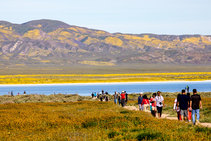
#TracktheBloom
This time of year there is a lot of #CAlove, especially with the much anticipated wildflowers. We will continue sharing updates from your public lands to help visitors know what to realistically expect when it comes to wildflower blooms. As you make plans to #RoadTripCalifornia, please remember the importance of responsible recreation and Leave No Trace principles.
As of April 10, 2019, The flowers are currently blooming throughout the Carrizo Plain National Monument and the bloom should continue for a short while before temperatures rise and they begin to fade. A broad mix of species blanket the plain itself as well as the adjoining mountains. Yellows stand out, but a closer look will reveal purple, pink, orange and white. Make sure to stop at the Goodwin Education Center (open 9 am to 4 pm Thursday through Sunday) for a map and information on bloom hotspots. Unlike many other California bloom areas, the Carrizo is undeveloped and has only a handful of formal trails.
However, you will see paths through the flowers created by previous visitors -- please stay on these routes to avoid crushing flowers. This not only allows others to enjoy the bloom, but also ensures the flowers can go to seed to provide for future blooms. Elk, pronghorn antelope and kit foxes are among the wildlife species that inhabit the area. Remember, the nearest travel services are over an hour from the monument so come prepared to be self-sufficient with a full tank of gas, plenty of water and other supplies.Don’t forget to check the visitor center wildflower info line (805) 475-2035.
Related: Leave No Trace Center for Outdoor Ethics
Related: Theodore Payne Wild Flower Hotline
Related: Desert USA Wildflower Report
|

How Landscape Photographers Can Improve at Leave No Trace
We often talk about “leaving no trace” in the outdoors. You don't take anything from the wilderness, pack out whatever your brought with you and minimize your disruption to the environment. However, our footsteps are a trace too. I've been thinking a lot about where I put my feet and my tripod. I try not to step on any fragile vegetation. I try not to step on the flower or the moss. I really encourage other people to think about even just setting down your tripod. What are you setting your tripod down on? It doesn't seem like such a big deal if it's one person that goes in there and comes out. Yet when you share a photo with an audience, you often inspire others to see it for themselves. This is a great thing and I want people to be inspired! I want them to go out and explore, and see these amazing places. And I want these places to be be pristine for landscape photographers who come after me. (The Outbound Collective)
|

Remember to #LeaveNoTrace While You #TracktheBloom
The Bureau of Land Management in California is excited to #TracktheBloom this year! The always anticipated spring wildflower blooms, especially in the Golden State are making headlines and it's no surprise why. With these blooms come an increased need for our public lands visitors to help care for these stunning landscapes, practice responsible wildflower viewing and set realistic expectations for what Mother Nature has in store. (BLM California Facebook)
|
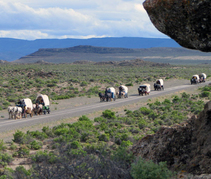
BLM, University Partner on Short Film About Nobles Emigrant Trail
A short film about the Nobels Emigrant Trail, an important route for 19th century pioneers, is now available for public viewing, thanks to a partnership involving the Bureau of Land Management and California State University, Chico. Expert filmmakers from the Advanced Laboratory of Visual Anthropology at Chico State produced, directed and filmed the story along the trail route that crosses high desert public lands northeast of Susanville. It describes how the route alleviated some hardships that 19th century emigrants faced on other routes into California’s gold fields and farmlands. The film features interviews with BLM archaeologists and with representatives from Trails West, an organization that documents and marks emigrant trails. (BLM news release)
|
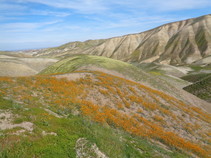
Central Coast Field Office Begins Tumey Hills Construction to Improve Public Access
The Bureau of Land Management will be making recreation facility improvements in April to the East Tumey Day Use Area, San Benito County, to improve public access, provide safer parking options and help reduce impacts to private property. A seasonal road closures will also go into effect in the Panoche and Tumey Hills on April 15. (BLM news release)
|

BLM Initiates Seasonal Fire and Target Shooting Restrictions in the California Desert District
The Bureau of Land Management will initiate stage II and III fire restrictions as of April 10 for BLM-managed public lands within Los Angeles, Orange, San Bernardino, Riverside, Imperial, Inyo, Kern, Mono and San Diego counties. These restrictions will remain in effect until further notice. Stage II and III fire restrictions address the use of campfires, controlled flame devices and smoking on public lands. (BLM news release)
All fire restriction information is available on the BLM California fire restrictions website at blm.gov/programs/public-safety-and-fire/fire-and-aviation/regional-info/california/fire-restrictions.
|

#NationalVolunteerWeek: Big Sandy Race
The Central California Off-Road Cyclists had perfect race day conditions for the Big Sandy Race last weekend at the BLM-managed San Joaquin River Gorge and Millerton Lake State Recreation Area. The race included three routes: Pro 38 Mile Route, 23 Mile Route, 15 Mile Route with 2,400 to 6,000 feet of climbing. In its 12th year, the event began as a means to celebrate the installation of the Big Sandy Bridge (located just beyond the BLM boundary on Millerton Lake State Recreation Area lands) and is a reminder of the power of community on public lands. The Big Sandy Bridge was completed in June of 2007. 69 volunteers from eight groups contributed over 4,600 hours to its installation. (BLM California Facebook)
Related: Big Sandy Race photos (Big Sandy Race Facebook)
Related: A Bridge Built by Central California Off-Road Cyclists (Big Sandy Race website)
|

Discover the Coast
Over 30 seabird enthusiasts attended classroom and field training to become citizen scientists for the North Coast Seabird Protection Network. Volunteers learned seabird and marine mammal identification, how to use optics to get a closer look at breeding birds without disturbing them, and population monitoring protocol. Humboldt State University and the Trinidad Coastal Land Trust are active partners and worked with BLM specialists to develop and implement the training. Nesting seabird populations are significant living resources on the North coast of California. The Trinidad area supports one of the largest concentrations of breeding seabirds in the contiguous United States. Seabirds come to Trinidad each April, after spending a winter at sea, to utilize the nutrient-rich waters off the Northern California Coast and the rocks and islands of the California Coastal National Monument for nesting. (BLM California Facebook)
|
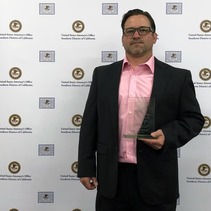
BLM California Special Agent Recognized for Investigative Excellence
BLM-California Special Agent Brad Kent was recognized for his extraordinary commitment and dedication at the second annual Excellence in the Pursuit of Justice Award Ceremony held in San Diego. The United States Attorney for the Southern District of California, Robert S. Brewer, Jr., acknowledged Agent Kent during the ceremony, which credits federal, state and local law enforcement professionals who significantly contributed to the Department of Justice mission in the district. (BLM blog)
|

CDFW Reminds Public to Leave Young Wildlife Alone
Late spring and early summer is the peak time for California’s wildlife to have their young, and the California Department of Fish and Wildlife is issuing a reminder to well-intentioned people to not interact with young wildlife – even if they find an animal that appears to be abandoned. It may be hard to resist scooping up a young wild animal that looks vulnerable and alone but human intervention may cause more harm than good. Young animals removed from their natural environment typically do not survive or may not develop the appropriate survival skills needed to be released back into the wild. (CDFW News)
|

$20 Million in Grants Will Support Recreational Boating Infrastructure Projects
The U.S. Fish and Wildlife Service’s Boating Infrastructure Grant program continues its substantial contributions to recreational boaters and local communities and their economies through this year’s award of $20.6 million in grants to states and U.S. territories. By providing funding to support dedicated boat tie-up facilities and associated amenities, the BIG program helps Americans enjoy the nation’s waters and our cherished wildlife and natural and cultural resources. (DOI news release)
|
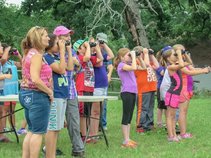
What is that Bird?
Do you wonder what the bird you are seeing is called? How many birds do you know by sight or by sound? Can you identify a bird by the way it flies? What type of birds would you expect to find in a grassland habitat? The first step in bird identification is learning to observe. Watch and listen. It often helps to record your observations in a journal using descriptive words, sketches or drawings. Photographing birds is another way to capture a permanent record of what you have seen so you can study it later. (USFWS Migratory Bird Program website)
|

Fill in the Blank
Every year from March through May, male sage grouse come to communal mating grounds, or _________, to show off their moves.
a) discos
b) gardens
c) leks
Keep scrolling to find out!
|
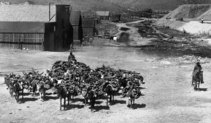
Now - December 2019: Fueling the Boom, Chinese Woodcutters in the Great Basin 1870-1920
The Nevada State Museum in Carson City is hosting a new exhibit featuring historical/ archaeological artifacts and photographs about Chinese woodcutting camps from Bodie Hills. The exhibit will highlight the significance of the woodcutting community near Chinese Camp (Aurora), shedding light on the little-known history of the Chinese woodcutters who lived there and felled pinyon pines to supply charcoal and firewood to the mining camps of Bodie and Aurora from 1875 to 1915. (Nevada State Museum website)
|
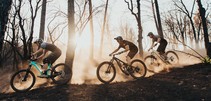
Now - May 31: 3rd Annual Redding Mayor's Mountain Bike Challenge
The 3rd annual Mayor's Mountain Bike Challenge is back to highlight backcountry and year-round single track trails near the City of Redding including BLM-managed public lands. This event was inspired by riders for riders. Visit Redding loves trails and wanted to get more people, locals and visitors alike, to fall in love with them. The Mayor's Mountain Bike Challenge is free to participate in and helps people discover some of the most exciting and challenging routes the North State has to offer. For more information, go to MayorsMTBChallenge.org.
|
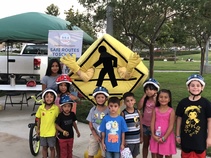
April 13: Healthy Cities celebration for Earth Day
The Bureau of Land Management has partnered with Main Street Murals, the County of San Bernardino, Barstow Unified School District, Safe Moves and Alta Planning + Design to host the first Healthy Cities event at Crestline Elementary School on Saturday, April 13, from 10 a.m. to 2 p.m. This event kicks off a larger citywide Healthy Cities Initiative that provides a philosophical framework for an inclusive, participatory process aimed at raising the quality of life for everyone and creating a truly healthy community. (BLM California Facebook)
|
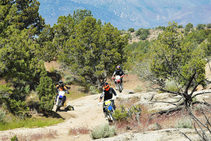
April 13-14: Motorcycle Races Coming for Fort Sage Area; Some Trail Access Will Be Limited
Up to 200 riders are expected to participate in the Diamond Back Hare Scrambles motorcycle race, Saturday and Sunday, April 13 and 14, at the Fort Sage Off-Highway Vehicle Area near Doyle. Trail access will be available only to participants while the races are underway.
Spectators are welcome at designated viewing areas at the Widow Maker, Land of David and Raptor trailheads. Participants and visitors can camp overnight at the main Fort Sage Trailhead. Single-day visitors will use parking areas along access roads. (BLM news release)
|

May 5: Story Time and Young Explorers at Santa Rosa and San Jacinto Mountains National Monument
Story Hour for children ages 5 to 7: Join us in our Kid’s Corner to hear a story about nature and creatures that live in the desert of the Santa Rosa and San Jacinto Mountains National Monument. Reading will be followed by an indoor or outdoor arts and crafts activity.
Young Explorers for ages 8 and above: Compass and maps are a very important part of your 10 essentials when hiking in the desert. Let’s explore and have fun learning about them!
RSVP required. Event will take place from 1 to 2 p.m. Please visit www.desertmountains.org/calendar or call (760) 862-9984 for more information.
|
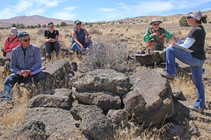
August 2-4: 2nd Annual Wild Horse Walkabout
Save the date! The public is invited to the Twin Peaks Herd Management Area near Susanville, CA. Attendees will spend the two nights out on the range to learn about how the BLM monitors rangeland and herd health from a BLM wild horse and burro specialist. Don't miss this unique opportunity to learn more about how BLM manages wild horses and burros. (BLM California Facebook)
|
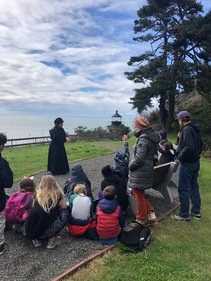
First Saturday of Every Month: Living History at Trinidad Head Lighthouse
BLM Park Ranger Julie Clark plays Josephine Harrington for Trinidad School students at Trinidad Head Lighthouse. Josephine lived with her husband, Captain Fred Harrington the lighthouse keeper, at the Trinidad Head Lighthouse for 28 years. Julie has been performing this living history piece to bring the past to life since the BLM acquired the lighthouse in 2014. Now part of the California Coastal National Monument, the Trinidad Head Lighthouse is open to the public the first Saturday of every month (year-round). Visitors can climb to the top of the lighthouse from 10 a.m. to 12 p.m. thanks to docents from the Trinidad Museum Society.
Contact the Arcata Field Office for details, (707) 825-2300.
|

Ongoing: Bring Home a Wild Horse or Burro
The BLM Wild Horse and Burro Program is excited to announce nearly 70 events this year as part of BLM's efforts to find good homes for our nation's wild horses and burros. Known for their intelligence, endurance and loyalty, wild horses and burros, with the right training, are outstanding for trail riding, packing, working and have successfully competed for awards in numerous fields from endurance riding to dressage. With more than 81,000 wild horses and burros on BLM-managed public lands, these wild icons of our American history need your help more than ever. Without any natural predators that can control population growth, wild horse and burro herds grow rapidly on the range and can quickly overcome the land's ability to support them. The BLM works to maintain healthy wild herds by gathering excess animals and placing them into good homes. (BLM website)
|
|
WILDLIFE QUESTION OF THE WEEK ANSWER
c) leks
Every year from March through May, male sage grouse come to communal mating grounds, or leks, to show off their moves. (Sage Grouse Lek Cam via Explore.org and The Nature Conservancy)
|
|
|
News.Bytes is a publication of the Bureau of Land Management in California.
Bureau of Land Management
California State Office
2800 Cottage Way, Suite W1623
Sacramento, CA 95825
(916) 978-4600
Send comments to the News.Bytes Team | Subscribe to News.Bytes | Unsubscribe
|
     
|
|
|